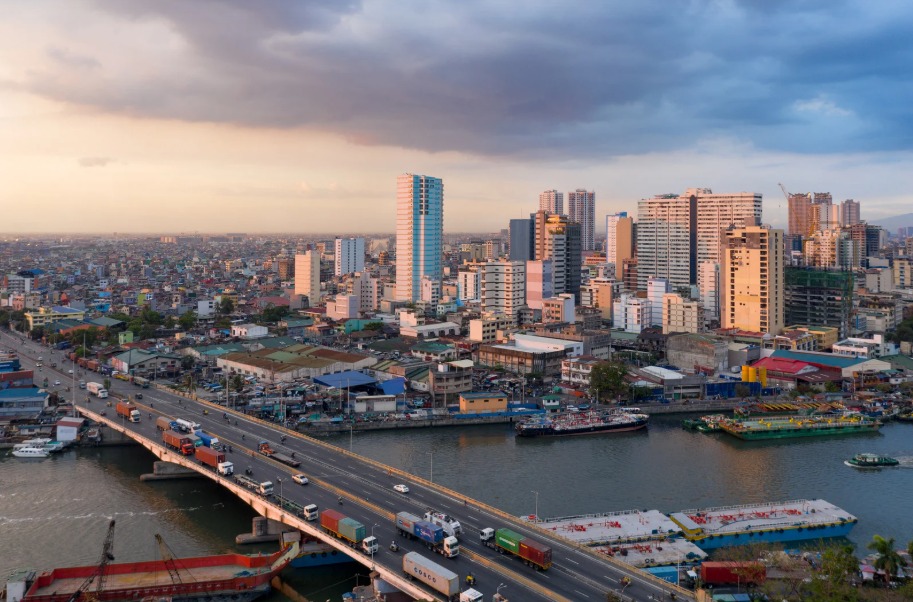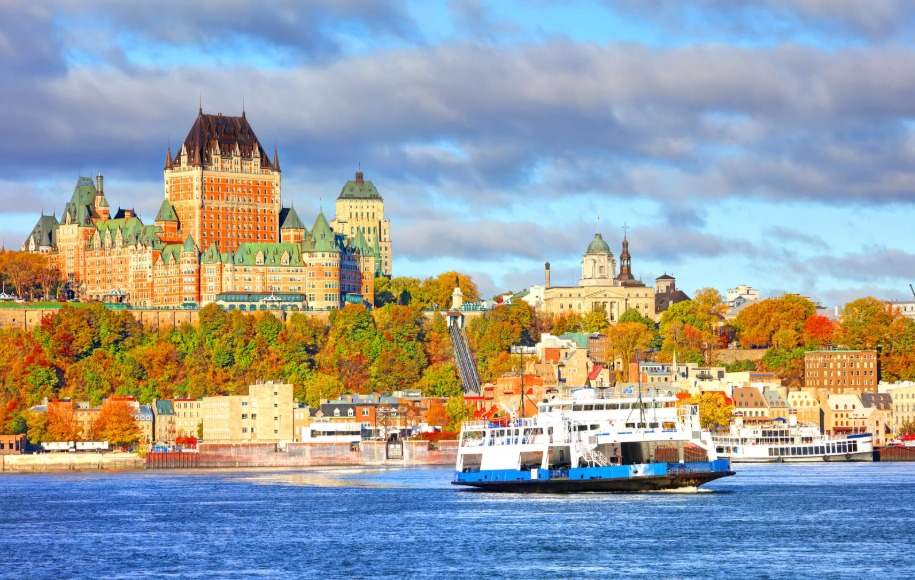Newsletter
Keep yourself update with our current news for Juwai IQI

Why The UAE Will Thrive in Any Trade War
Written by Dave Platter, Global PR Director“Of all countries in the Middle East, the UAE has the least to fear,” said Kashif Ansari in his recent commentary for Gulf Today.He was responding to the global trade turbulence set off by President Trump’s sweeping new tariffs. Ansari, Co-Founder and Group CEO at IQI, pointed to the UAE’s strategic alignment with the U.S. as key to its resilience.“The UAE has moved quickly to partner with the Trump administration,” he said. “The Emirati government even committed to investing $1.4 trillion into the U.S. economy over ten years and let President Trump present that investment as a major “win” in a White House announcement.Ansari is probably right that this diplomacy helped the UAE avoid the harsher tariffs imposed on others. The U.S. imposed only a 10% customs duty on the Emirates. That is much less than on China.“Jordan faces tariffs of 20%, Algeria 30%, Iraq 39%,” he wrote. “Even the EU faces a 20% tariff.”But the UAE’s strategy has other legs just as successful as its diplomacy with the U.S. For example, the country has done an excellent job of diversifying its trade ties. This geographic spread protects the UAE from overexposure to any one market. The UAE isn’t betting everything on Washington, he said.“Trade with the U.S. totaled $34.4 billion in 2024, but trade with China reached $95 billion,” Ansari said. “With India, it was $84 billion. The European Union adds another $68 billion, and Sub-Saharan Africa another $64 billion.”Even the oil market’s volatility is less of a threat than it once was. “The Emirates have successfully diversified the economy away from petroleum,” Ansari explained. “Non-oil GDP has grown by 46% over ten years and now accounts for about three-quarters of output.”Visible examples of that transformation are everywhere. “Look at the Burj Khalifa, Emirates Airline, Jebel Ali Port, and Dubai Mall,” said Ansari. “They are icons of the UAE’s real estate sector, global trade, and consumer spending.”Another sign of the UAE’s momentum is its growing appeal among global elites. “In 2025, the flow of wealthy individuals moving to Dubai and Abu Dhabi is set to accelerate,” he said. “The UAE ranks year after year as a top-10 destination for international property investment, even ahead of much larger countries.”He pointed to a long-term shift underway. “The population of residents with assets exceeding $100 million doubled over the past 10 years and will double again in the next decade.”This influx, he added, “stimulates development, drives demand for private banking, and helps the Emirates diversify the econo my even further through investments in startups, tech, and green energy.”Ansari’s conclusion is that the UAE has built itself into an essential node of global commerce. In the new world of tariff battles, the Middle East is not a sideshow; it is a crossroads.Click for more info!
12 June

Global Economic Outlook 2025: Geopolitical Risk and Inflation Return to the Macro Equation
Written by Shan Saeed, IQI Chief EconomistMarkets are volatile, and investors are puzzled. The magnitude of recent market reactions has not been seen in a generation. While public markets face sharp selloffs, private investors are often more insulated from Wall Street's turmoil.This divergence is more relevant than ever. The Nasdaq recently endured its worst day since 2022, with over $1 trillion in market value wiped out in just six hours."The market is going through a period of transition," President Trump acknowledged—a diplomatic way of warning that public investors should brace for continued turbulence.Hard Economic Truths Can emerge QuicklyU.S. stocks rose 14% from their April lows as signs emerged that trade tensions with China may ease.Supply chains cannot be rewired quickly without significant disruption.Stay optimistic on developed market (DM) stocks, but expect near-term volatility.The underlying U.S. economy and corporate earnings remain solid, bolstered by transformative forces such as AI.Favor short- and medium-term fixed income maturities in the U.S. market.THE AI MARKET IS HEATING UPAI Innovation Race: Top 5 Countries with the Most AI PatentsChina leads the global AI race with an astonishing 300,510 patents, accounting for over 50% of all AI-related intellectual property. The country is investing heavily in deep learning, natural language processing (NLP), and computer vision—cementing its leadership in AI-powered industries.The United States follows with 67,773 patents, maintaining its edge in AI research and foundational technologies with strong commercial applications. Japan ranks third, focusing on robotics, smart cities, healthcare, and autonomous systems with 26,429 patents.India is rapidly emerging as a key player, with 25,991 patents driven by initiatives like the National AI Mission and significant progress in AI applications across agriculture, healthcare, fintech, and language tech. South Korea rounds out the top five with 23,666 patents, pushing advancements in consumer electronics, smart factories, and 5G.The global AI race is reshaping the future of technology.Which country will lead the chargeover the next decade?click here for more info!
12 June

Where To Invest Next: Global Property Hotspots for 2025 and Beyond
Written by Taco Heidinga, IQI Global Strategic Advisor Savvy property investors are always looking for emerging opportunities. Whether you're seeking capital growth, lifestyle value, or a foothold in an appreciating market—Summer 2025 offers compelling choices across continents. Here's our pick of where to look next—including some surprising under-the-radar gems.ITALY - A Timeless Investment With Fresh MomentumItaly is no longer just a dream destination—it's also becoming a strategic investment choice. With property prices still undervalued compared to other Western European nations and an unmatched lifestyle offering, Italy is drawing increasing attention by the wealthy.Key reasons why Italy stands out in 2025:• Stable Eurozone entry point: Safe investment within the EU, ideal for diversification.• Golden Visa alternative: Attractive residency options for non-EU buyers.• Tourism rebound: Rental yields rising in key areas like Rome, Florence, and the coasts.• Tax incentives: Generous flat tax schemes for high-net-worth individuals and retirees.Spotlight on Sardinia: We're proud to announce that Immobiliare Sarda has joined the JUWAI IQI network as our exclusive local expert. This experienced team offers direct access to premium Sardinian properties—luxury coastal villas, traditional farmhouses (stazzi), and off-market land deals.Sardinia offers:• Crystal-clear waters and untouched nature• Low purchase prices compared to mainland hotspots• Strong second-home rental demand from Northern Europeans• A quiet, long-term growth trajectory with limited supplyOther Emerging Investment Gems Around the WorldMALAYSIA (Penang, Johor, KL)• MM2H visa allows long-term residency• Modern infrastructure with low entry prices• Strong rental market in key expat hubsTURKEY (Istanbul, Antalya, Izmir)• Currency devaluation makes property highly affordable forforeign investors• High rental yields in short-term and long-term markets• Citizenship-by-investment still activeGEORGIA (Tbilisi, Batumi)• Zero residency requirement for ownership• High ROI in new developments• Growing popularity with regional investors and digital nomadsSecret Tip: Albania and Montenegro• EU accession candidates, offering long-term appreciationpotential• Dramatic Adriatic coastlines at a fraction of Croatian prices• English-speaking local agencies and low purchase taxesSecret Tip: Albania and Montenegro• EU accession candidates, offering long-term appreciationpotential• Dramatic Adriatic coastlines at a fraction of Croatian prices• English-speaking local agencies and low purchase taxesFINAL THOUGHTSIn a globalized world, smart property investorsthink across borders. The key is to balancelocation, regulation, currency risk, and markettiming. With teams like Immobiliare Sardanow on board, JUWAI IQI is uniquelypositioned to offer local insight backed byglobal reach.If you’re ready to explore high-growthdestinations and discover your nextinvestment—whether for income, capital gain,or lifestyle—reach out to our team for tailoredguidance.Click Here For More Info!View the file
12 June

Pakistan’s Housing Market 2025: Gaps and Opportunities
Written by Junaid Hamid, Head of IQI Karachi PakistanRESIDENTIAL REAL ESTATE IN PAKISTAN: MARKET ANALYSIS 2025Pakistan’s Housing Market 2025: Navigating Gaps and GainsPakistan’s residential property market in 2025 remains shaped by a persistent housing deficit. With a population surpassing 241 million and a 19% rise in households since 2017, the demand faroutpaces supply.• Current Inventory: 36.2 million units• Deficit: Over 2.1 million basic units; up to 27 million when factoring in substandard housing• Urban Impact: Major cities face acute shortages, while some secondary cities still show temporary oversupplyRental Sector SnapshotRental housing supports millions:• 11.9% of households nationwide, jumping to 23.8% in urban areas• Rents in key cities are rising by about 10% annually• Yields remain attractive—Islamabad leads with 6.75%, Karachi follows at 6.21%Investment returns remain attractive in the rental sector despite economic challenges, with gross apartment rental yields averaging 6.24% nationwide. Islamabad offers the highest yields at 6.75%, followed by Karachi at 6.21%.Market MovementsHome prices continue to climb, influenced by inflation and construction costs:• Karachi: Houses +10.54% YoY; apartments +3.82%• Islamabad: High prices despite some corrections• Multan & Gujranwala: Emerging hotspots with rapid appreciationRise of ApartmentsUrban densification is fueling vertical living:• Karachi: 55% growth in mid-tier apartment supply projected• Islamabad & Lahore: Strong demand for upscale and mid-market apartments• Factors: land scarcity, shifting lifestyles, and developer preference for multi-unit projectsChallenges AheadThe market faces significant hurdles:• Affordability: Widening gap between income and housing costs• Financing: Limited mortgage options and high interest rates• Costs: Rising material and labor prices• Speculation: Investor-driven demand overshadows end-user needsLooking ForwardDespite challenges, fundamentals remain promising:• Economic stabilization and interest rate cuts could ease access• Urban growth and younger demographics will sustain long-term demand• Policy reforms, innovative financing, and PPPs are critical to closing the supply gapPakistan’s real estate market in 2025 offers both risks and rewards. While structural imbalances persist, strategic investments—especially in location and housing type—can deliver solid returns as the country continues its urban transformation.Click here now for more info!Download
9 June

Thailand Retail Market Poised for 2025 Growth
Written by Somsak Chutisilp, Country Head of ThailandCONSUMER CONFIDENCE AND ECONOMIC DRIVERSThe Consumer Confidence Index (CCI) fluctuated throughout 2024 but showed a strong rebound in Q4, signaling renewed optimism among consumers.This rebound is supported by government economic initiatives and the continued recovery of the tourism sector, both of which are expected to positively impact the retail market in 2025.Retail Expansion and New SupplyInvestment in both existing and new retail centers continues to generate consumer interest and engagement. In 2024, several major retail center renovations were completed, and new openings added over 185,000 square meters of net new retail supply.With tourism and retail closely linked, the rise in international tourist arrivals has especially benefited established enclosed malls in downtown Bangkok.Looking ahead, the enclosed mall format is expected to contribute another 200,000 square meters of supply, which will test current occupancy rates amid growing competition.Innovation and Consumer Trendsin a highly competitive retail landscape, both developers and brands are focused on delivering innovative products and exceptional customer experiences.According to Oxford Economics, Bangkok consumers allocate up to 40% of disposable income to discretionary spending, with the largest share going toward food and beverage (F&B).The F&B segment remains the dominant category for new international brand entries, with Japanese brands leading the way. Meanwhile, European brands continue to maintain a strong presence in the fashion and accessories segment.With consumer demand expected to stay strong in core retail locations, many overseas brands are eyeing Thailand as a key growth market in 2025.Click here now for more info!Download
9 June

India to Become World’s 4th-Largest Economy in 2025
Written by Manu Bhazin, Country Head of IndiaINDIA SET TO BECOME THE WORLD’S FOURTH-LARGEST ECONOMY: A NEW ERA OF GROWTHIndia is on the brink of a historic economic milestone, with the International Monetary Fund (IMF) projecting that the country will surpass Japan to become the world’s fourth-largest economy in 2025. According to the IMF's April Outlook, India’s gross domestic product (GDP) is expected to reach approximately $4.187 trillion.This marks a remarkable rise for India, which was the world’s fifth-largest economy until 2024. The United States, China, and Germany will retain their positions as the top three economies, but India’s consistent growth is a testament to its resilience and economic dynamism.The IMF has also forecasted that India’s economy will grow at 6.2% in 2025 and 6.3% in 2026, driven by strong private consumption, particularly in rural areas. Despite a slight downward revision of 0.3 percentage points due to global uncertainties and trade tensions, India’s growth outlook remains robust. The IMF's analysis highlights a transformative phase for the global economic order, where India’s ascent is a clear indicator of the changing balance of power.In many ways, real estate has been a cornerstone of India’s economic rise. The sector is one of the largest contributors to GDP, supporting millions of jobs, driving infrastructure development, and catering to a population with rapidly evolving needs. As India grows richer, the demand for housing, commercial spaces, logistics hubs, and retail outlets has surged, making real estate a critical pillar of economic growth. India’s journey to becoming the fourth-largest economy has been fueled by a real estate boom, both in urban and semi-urban areas. The sector’s growth has been powered by a mix of residential, commercial, and industrial developments. Major cities like Delhi-NCR, Mumbai, Bengaluru, and Hyderabad have witnessed record-breaking property transactions, while Tier-II and Tier-III cities have emerged as new growth engines.Looking ahead, as India’s economic trajectory points towards becoming the third-largest economy by 2028 with a projected GDP of $5.58 trillion, the real estate sector will continue to be a fundamental driver of this growth. Demand for premium residential properties, commercial office spaces, industrial hubs, and logistics parks will only increase. Real estate, with its ability to absorb investments, generate employment, and support a growing consumer base, will remain an essential building block of India’s economic success story.Click here now for more info!Download
9 June

Philippine Real Estate Remains Resilient in 2025
Written by Emmanuel Andrew Venturina, Country Head of PhilippinesPHILIPPINE REAL ESTATE MARKET DEMONSTRATES RESILIENCE AMID GLOBALMANILA, Philippines — Despite global economic uncertainties, the Philippine real estate market continues to exhibit remarkable resilience in 2025. Driven by robust domestic demand, strategic infrastructure developments, and adaptive industry practices, the sector remains a pivotal component of the nation's economic stability.Economic Headwinds and Market AdaptationThe 2025 global economy faces inflation, rate fluctuations, and geopolitical tensions. These challenges impact all sectors, including real estate. However, the Philippine market has responded well. Colliers Philippines reports that office space net take-up is expected to rebound, driven by traditional and outsourcing firms. Residential Sector: Shifting Preferences and Steady DemandResidential real estate remains key to growth. While Metro Manila's vacancy rate may hit 25% by end-2025, developers are turning to suburban areas to meet buyers’ needs for more space and affordability. In Caloocan, 10.7 billion has been allocated for urban development, targeting affordable housing and reshaping the city’s landscape.Office Market: Embracing Flexibility and InnovationThe office sector is adapting amid remote work trends. In Q1 2025, demand rose 7% year-on-year, largely due to the IT-BPM sector. Companies seek flexible, sustainable spaces, prompting developers to support hybrid work with innovative solutions.Retail and Hospitality: Signs of RecoveryRetail and hospitality are gradually recovering. Cushman & Wakefield Philippines notes improved mall occupancy, spurred by increased consumer spending. Developers are revitalizing retail spaces to align with shifting consumer behavior and rising foot traffic.Industrial and Logistics: Capitalizing on E-commerce GrowthThe segment continues strong, fueled by e-commerce and infrastructure progress. Regions like North and Central Luzon and CALABARZON are seeing more investment in logistics hubs. The "Build Better More" program boosts connectivity through expressways and airport upgrades, enabling new industrial opportunities.Investment Climate: Renewed Confidence and OpportunitiesRecent legislative reforms—such as the amended Foreign Investment Act and expanded REITs—have enhanced investor confidence. REITs offer access to income-generating assets and new capital-raising channels. Tourism and industrial real estate are set to benefit from rising foreign investments.Sustainability and Technological IntegrationSustainability and tech integration are reshaping the industry. Developers now emphasize energy-efficient design, green certifications, and digital infrastructure to meet growing demands from buyers and institutional investors.Outlook for 2025 and BeyondThe market’s adaptability underpins its potential for sustained growth. Demographic strength, urbanization, tech adoption, and infrastructure investment are key drivers. Experts highlight the importance of innovation and consumer insight, stating, “Real estate in the Philippines is no longer just about location—it's about lifestyle, resilience, and long-term value creation.”ConclusionIn 2025, Philippine real estate stands out for its resilience and adaptability. With solid fundamentals and growing investor interest, it continues to offer both opportunity and stability in a challenging global environment.Click here now for more info!Download
9 June

Canada’s Property Market Cools—But Quebec Stays Hot
Written by Yousaf Iqbal, Head of IQI CanadaCanada Real Estate Market – April 2025 OverviewIn April 2025, Canada’s housing market displayed mixed signals. Major cities like Toronto and Vancouver experienced noticeable slowdowns, with home sales and prices falling year-over-year due to high borrowing costs and economic uncertainty. In contrast, Quebec maintained strong momentum, with rising sales, increasing prices, and steady buyer activity. National trends highlighted cautious consumer behavior in some regions, while others continued to experience robust demand and price growth.Toronto (GTA)Home sales in the Greater Toronto Area (GTA) rose from March as part of the usual seasonal trend but remained 23.3% lower than in April 2024, with 5,601 homes sold. Buyers continue to wait for lower interest rates and greater economic certainty.Following the recent federal election, many households are watching Canada’s trade relationship with the United States, as a positive shift could boost consumer confidence and stimulate market activity, noted TRREB President Elechia Barry Sproule.New listings climbed 8.1% year-over-year to 18,836, providing buyers with more options. However, the MLS® Home Price Index fell 5.4%, and the average selling price declined 4.1% to $1,107,463.According to TRREB CIO Jason Mercer, high inventory levels gave buyers more negotiating power, driving down prices across the board. When combined with slightly lower borrowing costs, this trend has helped improve monthly mortgage affordability.VancouverThe housing market slowdown that began earlier in the year persisted in April, with sales down 23.6% year-over-year. Greater Vancouver REALTORS® (GVR) reported 2,163 residential sales, a sharp drop from the 2,831 sales in April 2024, and 28.2% below the 10-year seasonal average (3,014).New listings totaled 6,850 properties, a 3.4% decrease year-over-year, but still 19.5% above the 10-year seasonal average (5,731). The total inventory reached 16,207 properties, marking a 29.7% increase from April 2024 and 47.6% above the 10-year average.The sales-to-active listings ratio stood at 13.8% overall, broken down as:• Detached homes: 9.9%• Attached homes: 17.5%• Apartments: 15.7%These figures suggest a balanced market, though slightly tilted in favor of buyers, especially in the detached segment.QuebecIn contrast to national trends, Quebec’s real estate market remained resilient in April 2025, with home sales up 10% compared to the same period last year. Prices rose across all property categories—single-family homes, condominiums, and plexes—while days on market decreased, reflecting strong demand.Although active listings held steady, new listings increased by 11%, contributing to a 19% growth in total sales volume, signaling a competitive and active spring market.Click here now for more info!Download
9 June

































